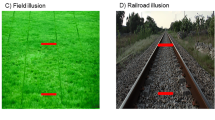Abstract
The arts and the sciences perform many of the same cognitive functions, both serving to advance understanding. This paper explores some of the ways exemplification operates in the two fields. Both scientific experiments and works of art highlight, underscore, display, or convey some of their own features. They thereby focus attention on them, and make them available for examination and projection. Thus, the Michelson-Morley experiment exemplifies the constancy of the speed of light. Jackson Pollock'sNumber One exemplifies the viscosity of paint. Despite their similarities, science and art might seem to differ in their attitude toward facts. Science is said to adhere to facts; art, to be indifferent to them. Such, I urge, is not the case. Science, like art, often scorns fact to advance understanding through fiction. Thought experiments, I contend, are scientific fictions; literary and pictorial fictions, aesthetic thought experiments.
Similar content being viewed by others
Author information
Authors and Affiliations
Additional information
This paper was first published in 1991, in Peter A. French, Theodore Uehling Jr., and Howard Wettstein (eds.),Philosophy and the Arts, Midwest Studies in Philosophy, Vol. XVI, University of Notre Dame, Notre Dame, pp. 196–208.
Rights and permissions
About this article
Cite this article
Elgin, C.Z. Understanding: Art and science. Synthese 95, 13–28 (1993). https://doi.org/10.1007/BF01064665
Issue Date:
DOI: https://doi.org/10.1007/BF01064665




